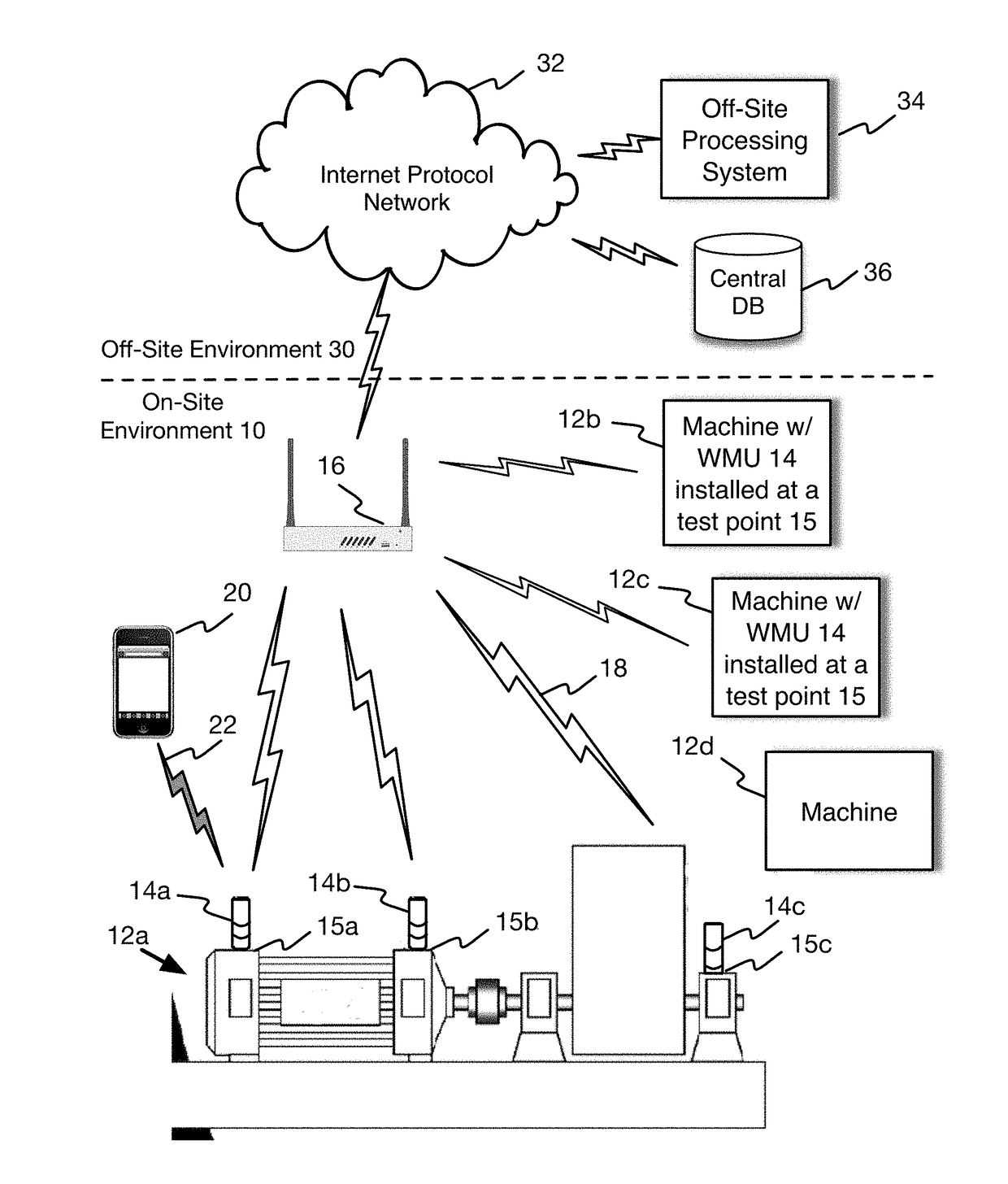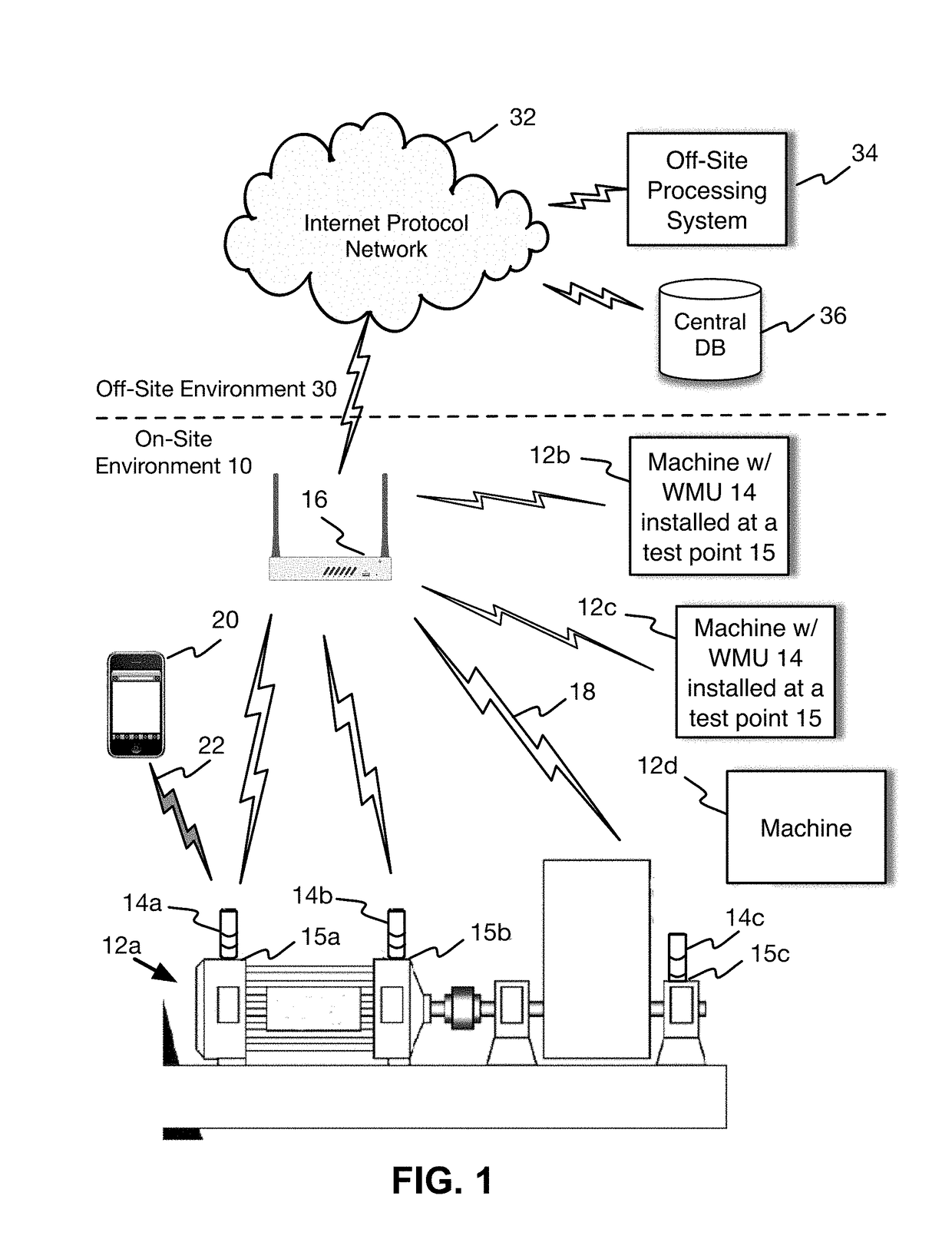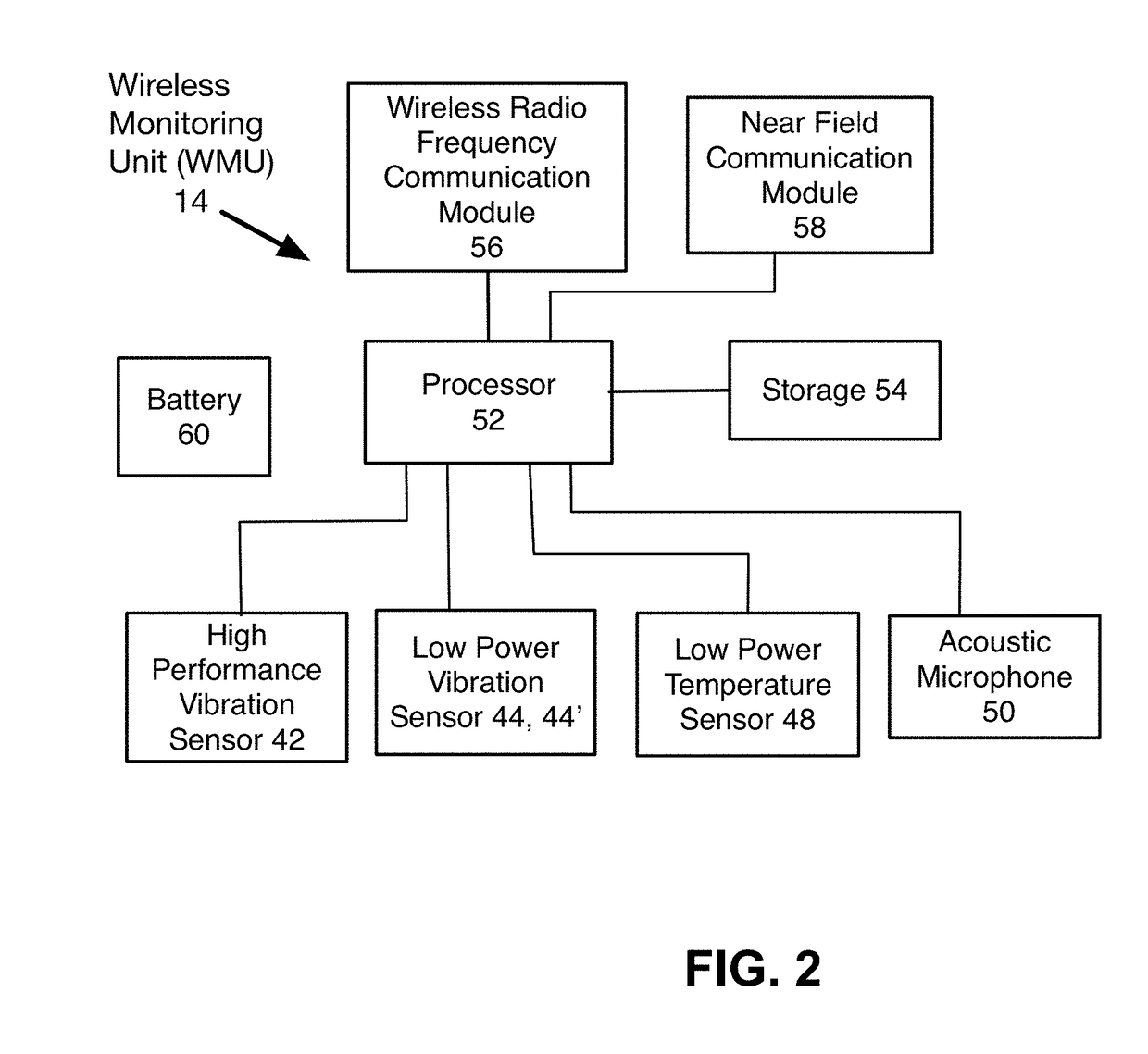Power efficient machine diagnostic monitoring using multiple vibration sensor wireless configuration
a vibration sensor and wireless configuration technology, applied in the field of machine diagnostic data collection and analysis, can solve the problems of reducing machine performance and reliability, affecting the accuracy of low-performance vibration sensors, and affecting the reliability of machines, etc., to achieve the effect of reducing the adverse impact of such tendency to deviate, low-performance vibration, and poor accuracy
- Summary
- Abstract
- Description
- Claims
- Application Information
AI Technical Summary
Benefits of technology
Problems solved by technology
Method used
Image
Examples
case 1 (
[0077starting at step 144) corresponds to a configuration in which a temperature threshold test is used. Case 2 (starting at step 146) corresponds to a case at which a temperature deviation is used. Referring to case 1, at step 150 the low power temperature sensor data acquisition process 76 is executed. The processor 52 activates the sensor 48 to collect temperature data. A single sample or a time-averaged sample is used as the temperature measure. The temperature measure is compared to a threshold temperature value. The specific threshold temperature is a configuration parameter set by command for the given machine 12. In addition the specific test is set by command as a configuration parameter. For some machines the test is whether the temperature measure exceeds the threshold temperature. For other machines (e.g., where test point 15 gets colder during machine operation) the test is whether the temperature measure is less than the threshold temperature. At step 152 the temperatu...
case 2 (
[0078starting at step 146) corresponds to a case at which a temperature deviation is used. For such case, the time period for collecting temperature data, the temperature deviation threshold, and the direction of temperature deviation are configuration parameters set by command according to the type of machine 12. The direction of temperature deviation is used to distinguish between a machine that is running and a machine that has recently been turned off, so that for example a machine that is cooling off after having been running hot does not trigger a finding of temperature deviation supporting a determination that the machine is running.
[0079]Referring to case 2, at step 160 the low power temperature sensor data acquisition process 76 is executed. The processor 52 activates the sensor 48 to collect temperature data. Initially, a single sample or a single time-averaged sample may be detected. Samples are to be collected over a predetermined window of time (e.g., 10 minutes, 30 min...
PUM
 Login to View More
Login to View More Abstract
Description
Claims
Application Information
 Login to View More
Login to View More - R&D
- Intellectual Property
- Life Sciences
- Materials
- Tech Scout
- Unparalleled Data Quality
- Higher Quality Content
- 60% Fewer Hallucinations
Browse by: Latest US Patents, China's latest patents, Technical Efficacy Thesaurus, Application Domain, Technology Topic, Popular Technical Reports.
© 2025 PatSnap. All rights reserved.Legal|Privacy policy|Modern Slavery Act Transparency Statement|Sitemap|About US| Contact US: help@patsnap.com



